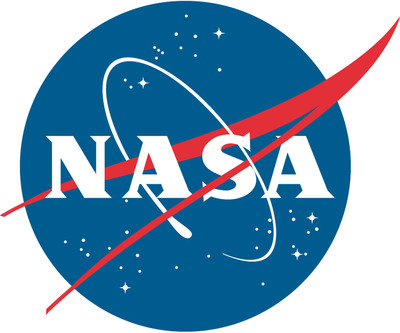WASHINGTON, March 29, 2022 /PRNewswire/ — NASA has picked two college students as winners of the Lunabotics Junior Contest, a nationwide competitiveness for K-12 college students showcasing the agency’s Artemis missions. Contestants ended up charged with planning a robotic that can dig and go lunar soil, or regolith, from 1 region of the lunar South Pole to a holding container close to a potential Artemis Moon base.
Fifteen-calendar year-old Shriya Sawant of Cumming, Georgia, was the winner from grades 6-12 with her RAD: Regolith Accretion Gadget style. Nine-year-previous Lucia Grisanti from Toms River, New Jersey, won for grades K-5 with her style and design of Olympus. Every single robot efficiently attained the process of collecting and transporting regolith throughout rugged lunar terrain.
Through its Artemis Scholar Challenges, NASA is welcoming the up coming generation of explorers – the Artemis Era – to discover far more about the mission that will pave the way to land the very first girl and initially individual of shade on the Moon. With each other with business and worldwide associates, NASA will create a sustainable existence on the Moon to get ready for missions to Mars.
“Wanting at the designs these college students submitted for Lunabotics Junior, it is really extremely hard not to be enthusiastic about the long run of the Artemis Era,” reported Mike Kincaid, NASA’s affiliate administrator for the Place of work of STEM Engagement. “Their creativeness and enthusiasm shine through in their strategies for a robotic capable of mining lunar regolith.”
One national winner from every single quality division was chosen from close to 2,300 submitted patterns. The two awardees gained a digital chat for their lecture rooms with Janet Petro, director of NASA’s Kennedy House Centre in Florida, exactly where the upcoming astronauts to check out the Moon will start.
As NASA prepares to return to the Moon, lunar regolith will be wanted for a number of functions, these kinds of as making a Moon base applying lunar concrete harvesting drinking water that also can be utilized for rocket gas and extracting achievable metals or minerals. The contest requested college students to consider variables exceptional to the lunar atmosphere when imagining their designs.
Sawant intended an autonomous robot that would make the most of a bucket drum to excavate soil in a imaginative way. Her system dealt with the challenges of decreased gravity on the Moon, lunar dust contamination, navigating tough terrain, and ensuring the robot stays well balanced for the duration of excavation and transport.
Grisanti’s solar-driven robot would use spiked wheels to traverse the lunar floor and scoop regolith into a cone-formed collector to individual big rocks from dust. She named it Olympus, soon after the home of Greek mythology’s Apollo and Artemis, which also are the names of NASA’s initial and current lunar exploration courses.
Approximately 500 educators, specialists, and place fans served as volunteer judges to evaluation scholar submissions. On March 15, judges selected 20 semifinalists, every single of whom received a Lunabotics Junior Prize Pack. On March 22, 8 finalists had been declared and will obtain a virtual training session with a NASA professional.
The contest semifinalists and finalists are as follows:
Grades K-5
- Lucia Grisanti, Toms River, New Jersey: Olympus – winner
- Sistine McKown, Hutchinson, Kansas: Athena the Navigator – finalist
- Colton Tolman, Wolf Point, Montana: The Parlanent – finalist
- Jack Vineyard, Beachwood, Ohio: Exploration – finalist
- Hargobind Singh, San Jose, California: My Lunar Digger (MD2024)
- Suhana Panwar, Roswell, Georgia: COSMO22
- Viktoria Cook dinner, Saint Charles, Missouri: Scorpio rover
- Ayaansh Jain, Glen Rock, New Jersey: DIANA (Roman Goddess of Moon)
- Sean Bartelo, Hamburg, New York: Believe that Rover
- Dhruv Goyal, Houston: Lunar Artemis Regolith Job
Grades 6-12
- Shriya Sawant, Cumming, Georgia: RAD: Regolith Accretion Gadget – winner
- Andrea Basuroski, Chapel Hill, North Carolina: Phoebe – finalist
- Adriana Maiotti, Nokomis, Florida: Undertaking Atlas – finalist
- Kovidh (Kovi) Monga, Springfield, Virginia: Inspiration Lunar Rover – finalist
- Baseem Abusneineh, San Pedro, California: The Pauger
- Brian Feuerman, Eureka, California: The Spider
- Winston Wong, Roseville, California: REGO
- Spencer Monkewicz, Chandler, Arizona: Forerunner
- Ke Jiang, Bellevue, Washington: Challenge Stardust
- Mason Lysaght, Snohomish, Washington: Terebro (drill in Latin)
The Lunabotics Junior contest was a collaboration involving Upcoming Engineers, NASA’s Human Exploration and Functions Mission Directorate, and the Office of STEM Engagement.
For additional information on NASA’s Office environment of STEM Engagement, check out:
![]() See original content material to down load multimedia:https://www.prnewswire.com/information-releases/nasa-names-winners-of-lunar-robotics-style-contest-301513206.html
See original content material to down load multimedia:https://www.prnewswire.com/information-releases/nasa-names-winners-of-lunar-robotics-style-contest-301513206.html
Source NASA

